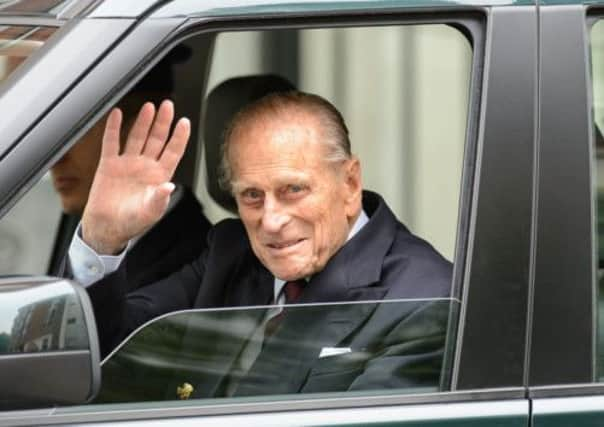Duke of Edinburgh leaves hospital after operation


But the Duke of Edinburgh seems to have preferred more heavyweight reading material if the epic historical tome he left with when he was discharged is any guide.
The prince was photographed clutching a 1,000-page hardback about war in the 18th century when he left the London Clinic on Monday, nearly two weeks after he was admitted for exploratory abdominal surgery.
Advertisement
Hide AdAdvertisement
Hide AdThe Crucible Of War, or The Crucible Of War: Seven Years’ War And The Fate Of Empire In British North America (1754-1766) to give it its full title, was written by American historian Fred Anderson.
Dressed in a blazer, shirt and tie, the duke was smiling and appeared at ease as he walked out with the book, saying goodbye to senior staff and waving before walking briskly towards his chauffeur-driven vehicle.
Buckingham Palace said the 92-year-old, who had to celebrate his birthday during his hospital stay, was in “good condition and good spirits”.
He appeared to be making good progress after his operation just over a week ago, and in the last few days had also been asking for paperwork from his office, it emerged.
A Buckingham Palace spokesman said yesterday: “The duke is in good condition and good spirits. He’ll take a period of convalescence, of approximately two months.
“The duke has expressed his thanks and appreciation to medical staff at the London Clinic and the many members of the public who have sent good wishes.”
He was admitted to the clinic 11 days ago to undergo a pre-arranged laparotomy – surgery to open up the abdomen to allow doctors to examine organs – under general anaesthetic.
The operation was carried out the next day and followed abdominal investigations.
It is understood that the surgery went according to plan.
Advertisement
Hide AdAdvertisement
Hide AdDetails of the original symptoms behind the duke’s admission have not been released, but it is thought the procedure did not involve his heart or bladder – organs with which the duke has had problems before.
Laparotomies are used by doctors to investigate a range of conditions which could cause abdominal pain including stomach cancer, appendicitis, internal bleeding and abscesses.
It is believed that Philip was visited on a daily basis during his hospital stay by royal doctor Professor John Cunningham.
He is now convalescing at Windsor Castle, where the Queen is currently staying for Royal Ascot week.
Over the past few days he has received visits from his family, including from the Prince of Wales who reported that his father seemed “much better” after his visit.
The Queen visited her husband for the first time during his latest stay in hospital last Monday for his birthday.
She left smiling and looked cheerful as she attended the annual Trooping the Colour parade to mark her own official birthday without her husband.
The duke has been admitted to hospital another three times in the past two years after suffering from previous health scares.
Advertisement
Hide AdAdvertisement
Hide AdIn August last year, he was treated at Aberdeen Royal Infirmary for a bladder infection. He spent four days in hospital over Christmas 2011, following an operation to clear a blocked heart artery.
And after attending events to mark the Queen’s Diamond Jubilee in June, he was admitted to hospital for five nights after sustaining a bladder infection.
The Duke’s apparent love of historical books was noticed last Christmas when he took the train home to Sandringham in Norfolk with the Queen. He was carrying a copy of The End Of Empire, Attila The Hun And The Fall Of Rome written by Christopher Kelly.